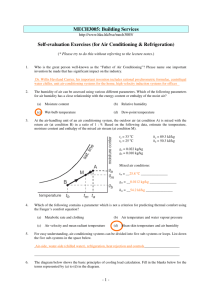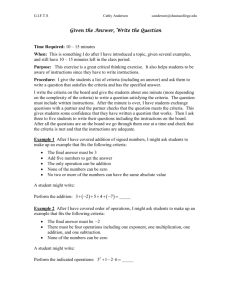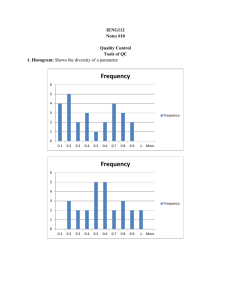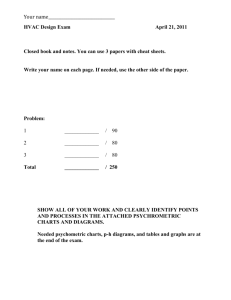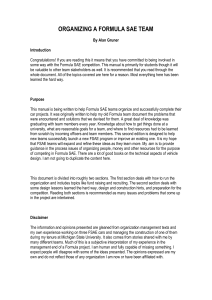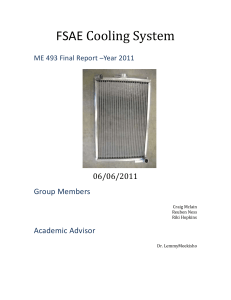Formula SAE
advertisement
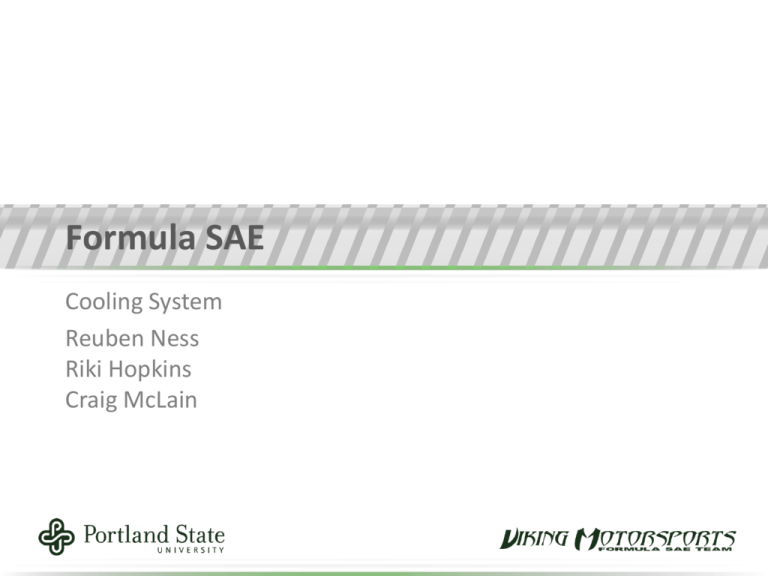
Formula SAE Cooling System Reuben Ness Riki Hopkins Craig McLain Background Formula Society of Automotive Engineers (FSAE) is an international engineering competition where students design, build, and test small-scale autocross racing vehicles. Competitions are held annually with regulations that create a real world challenge. In the competition, cooling related problems are not uncommon amongst competitors, and Portland State University’s (PSU) FSAE team in 2010 was not an exception. PSU’s FSAE team experienced the cooling challenges in 2010. The engine ran at temperatures hotter then ideal for optimized performance during testing and competition. The car would over heat when idled for an extended time, or when ran hard and then brought to an idle shortly there after, due to the insufficient airflow to the cooling system at idle. The car had hard hot starting due to excessive temperatures. Mission Statement The FSAE Cooling capstone team will design a new solution for the cooling of the 2011 FSAE car. The goal is to produce a solution through an understanding of the physics involved in the problem and the application of effective engineering methods. The final design will be prototyped and documented, with all of its performance characteristics quantified. Design Requirements Quality and Reliability Steady heat transfer of 30HP and maintaining 210°F at peak loading conditions. Performance Heat transfer of 30HP (1200Btu/min) One year of service life Size and shape Must not extend beyond the outer edge of the tire and must not negatively effect the center of gravity of the car by more then 0.5 in. Must meet all FSAE regulations Must meet the $200 budget. External Search Motorcycle Engine Radiators Honda CBR600F4i Advantages • Cheap • Honda-designed Disadvantages • Too small • Hard to package Honda CBR900RR Advantages • Larger size • Easier to package • Designed to be light and efficient Disadvantages • Expensive • Hard to find D-Sports Racer/Mini Sprint/Midget Advantages • Designed for motorcycle engines • Correct core area • Designed to be light and efficient Disadvantages • Core too thick • Hard to package Custom Radiator Advantages Built to specification Package how we want Disadvantages Expensive Core properties unknown Single or dual pass Single pass • Conventional • Heat transfer advantages • Fan performance Dual pass • Easier to plumb • Harder to package tanks Fan Sizing Cheap/Free • Too small (2010) • Unreliable Quality • Known performance • Reliable • Expensive Concept Evaluation Laid out Decision Matrices Engineering calculations Radiator Mac's Cost Timeline Capstone Interface Mac's Other Custom Other Custom Off the Scaled fabrication fabrication shelf scaled ~$300 7 >$300 4.5 fits 10 unknown fits 10 unknown excellent 10 good-excellent Totals: 37 unknown 4 4 unknown 4 4 does not fit 0 9 unknown 4 21.5 Fan Mac's Cost Timeline Capstone Quality Interface Actual performance Mac's Jegs scaled Off the shelf scaled Jegs scaled $100 7 $60 8.5 fits 10 fits 10 fits 10 fits 10 excellent 10 questionable 5 good 8 good 8 excellent 10 questionable/poor 4 Totals: 55 46 12 Calculations Matlab • Extensive • Syntax issues • Not robust code “Hand” Calcs • Heat transfer calcs • Tedious • Can be checked • Require more assumptions Final Design Final Dimension: 10.75”x16.5” with a one inch core (177 sq inches) Added one inch to each side for increased factor of safety Aluminum hoses offer less weight than conventional hoses and cleaner looks 10” 1100 CFM fan to provide airflow Analysis Completed: • Pressure drop experiment • Idle heat load • Fan testing and validation • Attempted to find heat transfer coefficient In Progress: • Experiment to confirm horsepower rejection at idle • Repeat experiment with the car on a dyno to obtain numbers with the engine under load • Data will be used to complete a mathematical model of the cooling system Conclusions There is no such thing as a perfect design Goals: • Understand the system being designed • Prototype and test • Solve past problems End Products: • Cooling system that satisfies the PDS requirements • Mathematical model of the Cooling system


